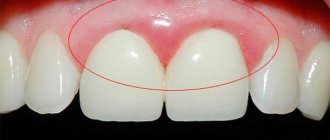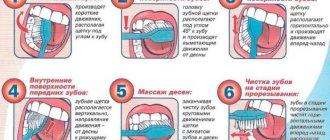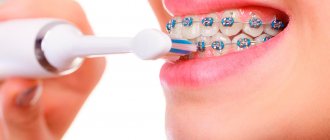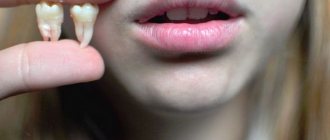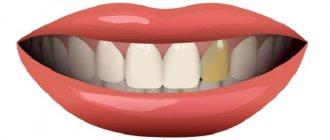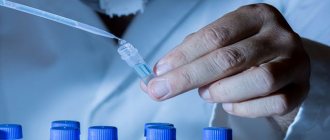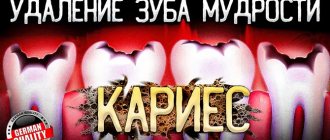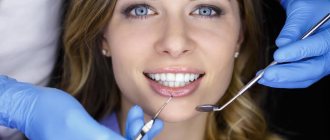Donating blood for analysis is a common procedure , even in some ways natural.
Whatever doctor we visit, be it a simple physical examination or a specific examination for any disease, a blood test is necessary.
But few people think that before collecting material they need to adhere to certain rules of “behavior”.
And in addition to restrictions on foods and drinks, when submitting the study material, in some cases it is not even recommended to brush your teeth .
What is the connection between such an “innocent” hygienic procedure and the reliability of the results of a blood test, and whether it is possible to brush your teeth before donating blood should be understood.
The procedure for donating blood for analysis
Note! Not a single examination, surgery, x-ray, appointment or even physical procedure is complete without a blood test.
This simple procedure allows a specialist to quickly assess the patient’s condition and identify possible deviations, even without general clinical signs of the disease.
Analysis of the material
can be venous or capillary , depending on the purpose of the study (sugar content, the amount of certain hormones, the presence of infections, pathologies and inflammatory processes, etc.).
Taking biochemistry
Biochemical analysis is a kind of “mirror” of the body . The slightest changes in his condition are reflected in the biochemical analysis.
Keep in mind! You should prepare for such an analysis by eliminating all possible causes of false indicators.
In addition to the ban on coffee, sugary drinks, smoking and alcohol , experts recommend not brushing your teeth using toothpaste before the analysis .
Especially when it comes to the study of glucose, urea and sugar.
It is necessary to take into account the quality of reagents that react to any external factors:
- toothpaste contains triclosan and other synthetic substances that have antibacterial properties, which, in turn, can affect the accuracy of the readings;
- saccharin contained in toothpaste directly affects blood glucose levels;
- foaming pastes with the addition of sodium lauryl sulfate affect changes in the protein composition of cells (nitrate compounds can accumulate in the circulatory system).
When prescribing a referral for this test, the doctor does not recommend morning brushing of teeth using toothpaste.
Testing for hormones
You should know! A comprehensive examination of hormones (reproductive, thyroid and pituitary gland) is prescribed to identify serious changes in the body.
Blood material is examined venously, taken on an empty stomach only in the morning (from 8 to 11 am).
It is prohibited to take medications that can change hormonal levels, as well as alcohol, visiting a sauna, any stress (including physical), as well as emotional outbursts.
Peace, rest and a positive attitude are recommended.
The determining factors for the accuracy of the results are time, gender and age of the patient.
This is in no way related to brushing your teeth; in this case, there are no restrictions on the use of toothpaste.
Rules for collecting stool
Before submitting the material (3-4 days before), you must stop taking medications (laxatives, castor and petroleum jelly, rectal suppositories). Stool obtained after an enema or barium intake (during X-ray examination) is not allowed for examination.
Before collecting the test, urinate in the toilet. Next, by natural defecation, collect the stool in a bedpan (previously washed and dried). Feces are collected in a clean, disposable container, no more than 1/3 of its volume.
The material must be delivered to the laboratory within 3 hours from the moment the analysis is collected. During this period, it is advisable to store the analysis in the cold (+2...+8C), avoiding freezing.
For sugar
It is worth noting! In this case, along with serious restrictions on food and drinks (you can’t even drink sweet tea or water 8 hours before taking the material), there is also a ban on toothpaste.
What is the reason for this limitation?
The fact is that any, even the most natural toothpaste contains sugar .
It is absorbed through the mucous membrane into the blood and naturally affects sugar levels in the circulatory system.
To avoid distortions in the results of a blood sugar test, and therefore not to donate the material again, you should avoid brushing your teeth using toothpaste immediately before the procedure.
Conjunctival smears
The material should be obtained with a dry sterile cotton swab on a plastic base under local anesthesia (2 drops of decaine solution). Pulling back the lower eyelid, move the swab 4-5 times along the conjunctiva with rotating movements, grabbing the outer and inner corners of the eye.
After collecting the material, place the swab (the working part of the probe with a cotton swab) into a sterile disposable 2 ml Eppendorf tube with transport medium (TS) (colorless).
Having immersed the working part of the probe in the transport medium, carefully break off the plastic rod at a distance of no more than 0.5 cm from the working part and leave the swab with the material in the transport medium.
Close the test tube tightly with the lid, avoiding any gaps or creasing of the inside of the lid, and label it in accordance with the direction form
Blood test for donation
Stay up to date! In any donor center, after registration, a step-by-step examination of the blood of a potential donor is carried out:
- in the laboratory, material is taken from a finger to determine the blood type, Rh factor and the amount of hemoglobin;
- a transfusiologist, as a result of an examination, based on capillary examination, gives permission for donation;
- All donated blood is examined for the presence of HIV infection, and is also tested for all types of hepatitis and syphilis.
Before the donation , it is mandatory to drink sweet tea with cookies or other baked goods to ensure the donor’s normal well-being.
Therefore, the issue of prohibiting brushing teeth is not discussed; the hygiene procedure is not an obstacle to this manipulation.
17-Ketosteroids
When determining the daily excretion of 17-KS, two days before urine collection and on the day of collection, exclude intensely pigmented (colored) foods from the diet: beets, carrots, citrus fruits, multivitamins, red wine, grapes, watermelons.
Material for research: 24-hour urine. Patient preparation. 3 weeks before the study, it is necessary to exclude medications that affect the determination of 17-KS. On the eve of the study, physical activity, smoking, and stress are excluded. Urine is collected in a clean wide-necked container with a lid. At the end of urine collection, it is necessary to measure the volume of urine excreted with a measuring cylinder, mix thoroughly and then deliver a 20 ml portion to the laboratory. In the direction for the study, it is necessary to indicate the volume of urine, time of collection, age and gender of the subject.
Urine culture (with antibiotic sensitivity testing)
Urine collection must be carried out before the start of drug treatment and no earlier than 5 days after the course of treatment. Collect urine in a sterile container: DRAIN THE FIRST 15 ml OF URINE INTO THE TOILET. Collect the next 3-10 ml in a sterile container and screw the lid on tightly. Deliver the biomaterial to the laboratory within 1.5-2 hours after collection. It is allowed to store the biomaterial in the refrigerator (at t +2° +4° C) for no more than 3-4 hours. If delivered to the laboratory later than the specified time, the results of urine culture may be unreliable.
Urine collection for determination of UBC (bladder cancer antigen)
It is recommended to collect a morning urine sample. An arbitrary portion of urine that has been in the bladder for 3 hours or more is subject to examination. The biomaterial is delivered to the laboratory within 3 hours after collection.
Before gastroscopy
First of all, you should understand what gastroscopy is and for what purpose this examination is prescribed.
Need to know! Gastroscopy is an examination of the stomach with a special flexible probe (gastroscope).
A special light bulb is attached to one side of such a device, and a camera is attached to the other, with the help of which the state of the stomach is recorded on the screen.
The probe is inserted through the mouth, passes the esophagus and enters the stomach, examining it
for fibrous formations, ulcers and polyps.
Gastroscopy also allows you to take a sample of stomach tissue for a biopsy.
How to properly prepare for such an examination?
First of all, the stomach must be empty, and the patient must not eat anything (6-8 hours) or drink anything (2 hours) before the procedure.
Remember! Blood must first be donated to identify various side diseases, as well as to prevent unwanted complications:
- a general (clinical) analysis is prescribed to identify pathologies and inflammatory processes in the body;
- determination of blood type and Rh factor is necessary to prevent unwanted reactions and complications;
- a coagulation test is prescribed to identify various disorders in the hemostatic system, since minor bleeding is possible when a gastroscope is inserted;
- the presence of hepatitis B and C antibodies, HIV infection is a risk area for infection of the doctor and staff.
These tests have nothing to do with brushing your teeth, and the use of toothpaste will not in any way affect the reliability of the results (the number of white blood cells, hemoglobin and platelets, red blood cell speed, etc.).
Keep in mind! If the patient is prescribed a biochemical blood test, then you should refrain from brushing your teeth using toothpaste immediately before taking the test (see biochemical blood test).
Preparation for microbiological research
Rules for preparing for some microbiological studies are included in the relevant sections (examinations of urine, feces, semen). For all microbiological studies, it is recommended to discontinue the use of antibacterial drugs 7-10 days before taking the material.
Microbiological studies of genital secretions
Patients should not take antibiotics for 2 weeks to a month (as recommended by a doctor) before the study. In women, it is best to take biological material no earlier than 5 days after the end of menstruation. Before taking the material, patients are advised to refrain from urinating for 1.5-2 hours. In the presence of purulent discharge, it is recommended to take a scraping 15-20 minutes after urination. In men, the test is carried out in the morning before urination, or patients are advised not to urinate for 2-4 hours before taking the sample.
Breast milk culture
Before collecting the material, wash the breasts with warm water and soap, dry with a clean towel, carefully treat the nipples and the area of the mammary glands with a cotton swab moistened with 70% ethyl alcohol (each gland is treated with a separate swab). The first 10-15 ml of expressed milk is not used for analysis. The next 3-4 ml of milk are collected from each breast into a separate sterile container (label - right and left). Deliver the material to the laboratory within 2 hours after collection.
Collecting prostate secretions for culture
Prostate secretions are obtained through vigorous massage of the prostate gland by a urologist. The material is collected in a sterile container after toileting the external opening of the urethra with warm water and soap.
Throat swab examination (culture)
A swab from the throat is taken strictly on an empty stomach; before the test you should not brush your teeth, rinse your mouth with water, or drink. When conducting a diphtheria test, two swabs are taken: from the throat and nose.
Close the test tube tightly with the lid, avoiding any gaps or creasing of the inside of the lid, and label it in accordance with the direction form
Nasal and throat swabs (PCR method)
Separate probes are used to obtain material from the nose and throat.
Nasal cavity: before the procedure, it is recommended to remove mucus from the nasal cavity. A smear is taken with a dry sterile probe. The probe is inserted with a slight movement along the outer wall of the nose to a depth of 2-3 cm to the inferior concha. Then it is slightly lowered downwards, inserted into the lower nasal passage to a depth of 2 cm, a rotational movement is made and removed along the outer wall of the nose.
Pharynx: it is necessary to rinse the mouth with boiled water. A smear is taken with a dry sterile probe using rotational movements from the surface of the tonsils, palatine arches and the posterior wall of the oropharynx.
After taking the material, the working part of both probes is placed in a sterile disposable Eppendorf tube with transport medium (colorless) for respiratory swabs. The ends of the probes are broken off so that they allow the lid of the test tube to be tightly closed. Screw the lid tightly.
Oral hygiene rules without using toothpaste
People are accustomed to brushing their teeth from an early age, and recently both advertising and newfangled medical TV shows, forums and blogs have been aimed at improving this process.
New electric multifunctional brushes for children and adults are being invented, toothpastes with incredible composition and effect are being advertised.
But one point is missed here - brushing your teeth at night is important.
It is the “overnight” leftover food that harms dental health; the morning procedure is more likely to eliminate psychological discomfort (odor, plaque, etc.).
Therefore, by brushing your teeth thoroughly before going to bed, in the morning (if required by the doctor before donating blood), you can do without toothpaste.
You should know! What can replace morning brushing of teeth:
- In the evening, on the eve of the morning blood test, you should thoroughly brush not only your teeth, but also your tongue, gums and the inside of your cheeks. It is in these places that a huge number of microbes accumulate.
- In the morning , you need to brush your teeth and tongue without toothpaste to remove plaque and freshen your mouth.
- Be sure to rinse your mouth with water or a special solution (10 - 12 drops of hydrogen peroxide per 250 grams of warm water). Rinsing will remove bad breath and neutralize bacteria that appeared at night.
It is prohibited before taking blood tests .
This is explained by the fact that, in addition to sugar, they contain many harmful synthetic compounds, dyes and flavors that can affect the results of the analysis.
Preparing for urine tests
General rules:
- It is recommended to obtain a sterile urine container the day before the test.
- 10-12 hours before the test it is not recommended to consume: alcohol, spicy and salty foods, as well as foods that change the color of urine (beets, carrots).
- If possible, avoid taking diuretics.
- After cystoscopy, a urine test can be prescribed no earlier than 5-7 days later.
- Women are not recommended to take a urine test during menstruation.
- The patient collects urine independently (with the exception of children and seriously ill patients).
- Before taking the test, perform a thorough toileting of the external genitalia:
- in women, use a cotton swab moistened with warm soapy water to clean the external genitalia (treating the labia by moving the swab in front and downwards); dried with a clean cloth, previously ironed with a hot iron.
- in men - the external opening of the urethra is toileted with warm water and soap, then washed with warm water and dried with a clean napkin, previously ironed with a hot iron.
- Deliver the biomaterial to the laboratory within a day.
Collecting urine for general analysis in a container with a preservative
At the medical office, obtain a container as well as a vial of preservative. On the eve of the test, it is recommended not to eat vegetables and fruits that can change the color of urine (beets, carrots, etc.), and not to take diuretics. Before collecting urine, it is necessary to perform a thorough hygienic toilet of the genitals. Women are not recommended to take a urine test during menstruation. Collect approximately 50 ml of morning urine in a container. To properly conduct the study, during the first morning urination, release a small amount of urine (the first 1 - 2 seconds) into the toilet, and then, without interrupting urination, place a urine collection container into which to collect approximately 50 ml of urine. Immediately after collecting urine, close the container tightly with a screw cap. Place the test tube with the rubber stopper down into the recess on the lid of the container, and the test tube will begin to fill with urine. After urine stops flowing into the test tube, remove the test tube from the punch (Fig. 1 and 2). Invert the tube several times to better mix the urine with the preservative (Fig. 3).
Collection of 24-hour urine for biochemical analysis
Urine is collected over the course of a day. The first portion of urine in the morning is removed. All subsequent portions of urine excreted during the day, night and the morning portion of the next day are collected in one container, which is stored in the refrigerator (+4...+8°C) during the entire collection time (this is a necessary condition, since at room temperature it is significantly glucose levels decrease).
After completing urine collection, accurately measure the contents of the container, be sure to mix it and immediately pour it into a small jar. Bring this jar to the medical office for examination. You don't need to bring all your urine. On the referral form you need to indicate the daily volume of urine (diuresis) in milliliters, for example: “Diuresis 1250 ml.”
Urinalysis according to Nechiporenko
The average portion of morning urine is examined; when collecting urine, follow the general recommendations.
Urine examination according to Zimnitsky
8 containers are used to collect urine. Pre-write on the label on urine containers your data: full name, date of birth, date and time of urine collection: 9, 12, 15, 18, 21, 24, 3 and 6 hours, the entry must be made in legible handwriting .
In the morning at 6 o'clock you should completely empty your bladder
Then, every 3 hours (at 9, 12, 15, 18, 21, 24, 3 and 6) collect all the urine that has accumulated during this time into a separate pre-labeled container. Screw on each container with a lid and place in a cool, dark place.
The day after the last urine collection, you deliver all containers for examination.
2 glass sample
After toileting the external genitalia, the patient urinates in two dry, clean containers (the second portion should be predominant in volume). Each portion of urine must be mixed and collected in a separate vacuum tube. The resulting two test tubes are marked (portion number; sample number is the same for two portions, in accordance with the direction form).
3 glass sample
After toileting the external genitalia, the patient urinates in three dry, clean containers (the second portion should be predominant in volume). Each portion of urine must be mixed and collected in a separate vacuum tube. The resulting three test tubes are labeled (portion number; sample number is the same for three portions, in accordance with the direction form).
